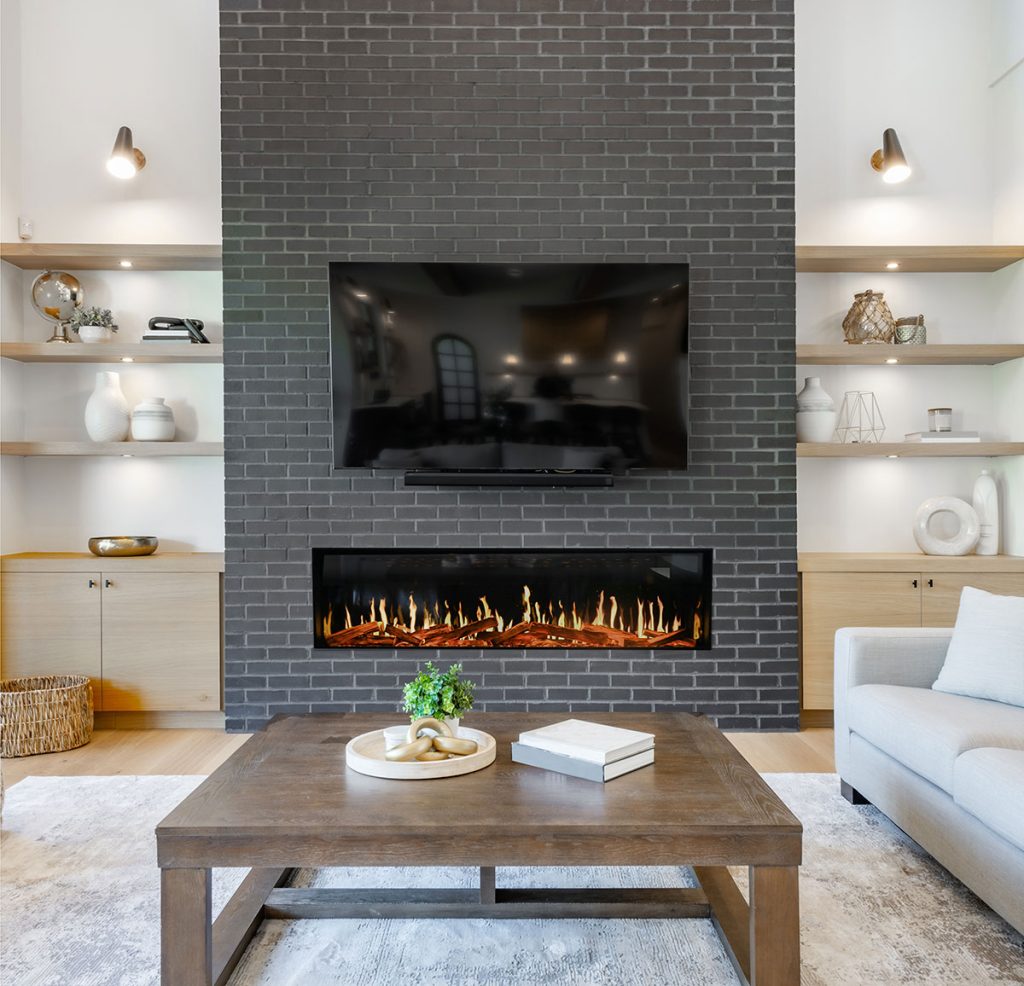When you’re planning a fireplace design, one of the first questions you need to answer is, How big should my fireplace be? It’s one of the first things we need to know when clients visit our fireplace showroom, so we can guide them to the best options for their project. Sometimes, they aren’t sure of the answer, so we spend a lot of time discussing their design plans, to determine the best fit. There are many different elements that will determine the ideal fireplace size, including design and budget considerations. When it comes to electric fireplaces (our specialty), there is no need to consider heat output when deciding on the best fireplace size, because heat output is pretty consistent across all sizes of electric fireplaces. Having said that, there is a much wider range of sizes in electric fireplaces compared to gas fires, so it’s helpful to understand how to determine how big the fireplace should be. We’ve outlined some of the key factors, below.

How big should my fireplace be when mounted under the TV?
Not everyone agrees with the trend toward mounting TV’s above fireplaces. However, the reality is that it’s often a challenge to set up a room so that both may be enjoyed if they are not on the same wall. For that reason, ‘How big should my fireplace be when mounted under the TV’ is a question we answer almost daily. For those who must put their TV above the fireplace, we recommend that the fireplace be at least as wide as the TV, and possibly wider. Today’s most popular fireplaces are what we call ‘linear’, meaning they are much wider than they are tall. As these fireplaces get wider, they do NOT get taller. TV’s on the other hand, do get taller as they get wider. Also, remember that TV sizes are measured on the diagonal, while fireplaces are measured straight across.
Here are some general guidelines for minimum fireplace sizes that correspond to TV sizes:
- 55-inch TV = 50-inch fireplace
- 65-inch TV = 60-inch fireplace
- 75-inch TV = 74-inch fireplace
If wall space allows, step up to the next size fireplace. TVs that are 55-inches wide, or smaller, may look reasonably balanced if the fireplace is the same width. However, larger TVs need to be balanced out with fireplaces that are slightly wider than the TV. Otherwise, the TV looks top-heavy above the fireplace, due to the additional height on the larger TV.
How big should my fireplace be for the amount of heat I need?
Most customers are not looking for a lot of heat from their fireplaces, but for those who are, the size of the room will translate into a minimum number of BTUs needed from the fireplace. (BTU = British Thermal Unit, or a measure of heat output) If those BTUs are coming from a gas fireplace, then size matters, because bigger burners produce more heat. If the BTUs are coming from an electric fireplace, then the question of ‘How big should my fireplace be’ isn’t relevant, because all models have roughly the same heat output. An electric fireplace with 120 volt connection will produce around 5000 BTUs, or enough heat for 400- 500 square feet. With a 240 volt connection, you can boost heat output to over 8000 BTUs. Whether a fireplace can be wired for 240 volts is not determined by size, but by model, as many models are limited to 120 volt connections.

How big should my fireplace be when compared to the size of my room?
Regardless of heat output or TV size, the size of the fireplace should suit the size of the room. A small fireplace will be lost in a large space. Likewise, a large fireplace could overpower a tiny room. However, we see clients going too small far more often than going too big. When asking ‘How big should my fireplace be when compared to the size of my room’, you should also be considering the size of the wall on which the fireplace will be placed. However, don’t let a small wall trick you into putting a small fireplace into a large space. If the wall you have in mind won’t handle the size of fireplace you really need, then you should consider another wall.
Stylish Fireplaces & Interiors specializes in electric fireplaces. Their Toronto-area showroom features over 50 electric fireplaces, as well as all of the add-ons and finishing materials needed to finish a project. They are NFI-certified Hearth Design Specialists, and can consult on any fireplace project.